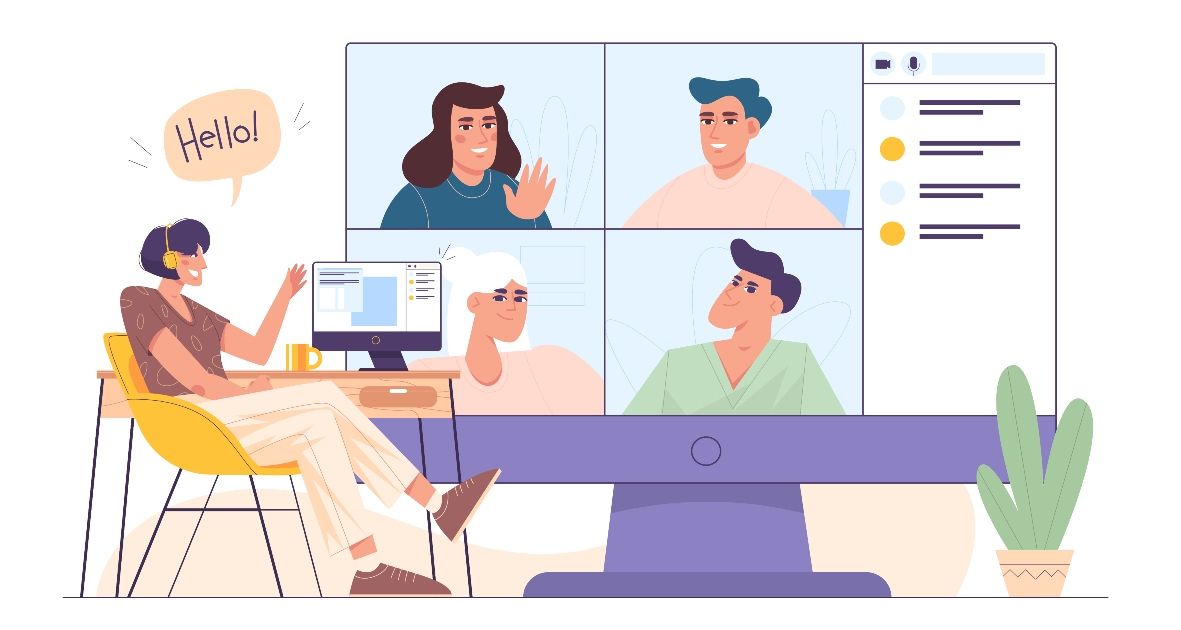Navigating the New World of Work

Vector image is from freepik.com by @redgreystock
With Covid-19 slowly easing, fully remote work will likely soon become a thing of the past. As we bid farewell to pandemic-era norms, questions about what the future of work will look like have been dominating discussions on the topic for much of the past year.
Will a looming recession force employees to accept going back to the office full-time? Does working from home help or harm individual and organisational productivity? And how will the relationship between employers and employees continue to shift as we usher in a new era of how, when and where work is done?
In a recent INSEAD Lifelong Learning webinar, Henrik Bresman and Mark Mortensen, both Associate Professors at INSEAD, unpacked these questions with moderator Vinika D. Rao, Executive Director of the INSEAD Emerging Markets Institute, Gender Initiative & Africa Initiative, and Asia Director of the Hoffmann Global Institute for Business & Society.
Bresman noted that many conversations about the future of work have been relatively simplistic and largely focused on aspects such as how many days workers will be expected to report to the office. This is a rather blunt instrument with which to address a complex issue, and the matter requires a more nuanced analysis that considers global, organisational and individual differences.
Through an international lens
To approach the topic more comprehensively, Bresman and Mortensen surveyed hundreds of managers across the Americas, Europe, Asia Pacific (APAC) and the Middle East. “A lot of the emerging research related to what’s coming next has been very US-centred,” Bresman said. “We wanted to run a survey that was a little bit more global.”
So far, they have found that most managers feel moderately positive about the effect of remote working on work-life balance. But there are differences of opinion related to productivity concerns. On average, managers in the Americas and APAC are more worried about the negative impact that working from home may have on productivity. In APAC, that fear translated into a higher motivation to get workers back to the office. However, this was not the case in the Americas.
“This is not a universal, unilateral thing,” Mortensen said. “There are some very different business models in terms of how employment contracts are structured across different regions, [as well as] cultural norms around what we expect of work and the way in which we do it.”
More than just physical
Mortensen highlighted that the phrase “hybrid working” is not an effective way to describe workers splitting time between home and the office. “People interpret that as being a purely physical thing… but there are a lot of things in play,” he said. “Physical location is one, but temporality is another. How many hours are people working? What hours are people working? Do they have autonomy in the hours they’re choosing to work?”
Employment contracts, Mortensen stressed, are another piece of the puzzle, and there’s also been a post-pandemic shift to more contingent work. Looking ahead, it’s critical to think holistically about what employers offer and what employees actually want, such as flexible working policies. These dynamics will keep changing as organisations continue to feel the bite in the war for talent.
Read more: The Future of Work is Hybrid
The legacy of remote work
Bresman and Mortensen outlined the changes that remote and hybrid work have introduced, including the blurring of professional and personal boundaries. “Things that used to be put in the box of home have to be taken into consideration,” Mortensen said, giving the example of requiring to disclose that you have a sick family member as a reason for being unavailable for an all-hands meeting.
Mortensen also expanded on the different types of productivity that factor into work – individual productivity and collective productivity – and how they can be at odds. For instance, while an employee may be five times more productive in their individual tasks at home, this may curb collective productivity in that colleagues may not be able to dialogue with and learn from them in the office. “This is what we’re currently undervaluing,” he said. “A lot of the discussions around the value of face-to-face interactions tend to ignore that.”
Mortensen also touched on issues related to organisational trust that can emerge when managers and employees don’t operate out of the same physical space. “When Covid-19 hit, there was a large bump in searches for remote-monitoring software… but there are all sorts of issues with this technology,” he said, adding that the question of trust is not because of remote work and in fact has to do with the culture of the organisation. “The solution is not pieces of technology.”
Discover: Six Serious Challenges of Hybrid Work and How To Overcome Them
Rather than resorting to remote-monitoring tools, Mortensen suggested that firms focus on building a culture around trust and mutual accountability. Offering another perspective, Bresman added that remote surveillance doesn’t only lead to cynicism. “Some people really like these tracking tools because people can see that they’re hardworking,” he quipped. “Like everything else, it’s not black and white.”
In a similar vein, Mortensen cautioned against assuming that remote work is preferable for certain types of individuals. “We have the assumption that working from home is heaven for introverts because they finally don’t have to deal with all the people in the office,” he said. “But data shows that it’s very individual... having to focus on 40 people on a Zoom call can be much more draining and difficult for introverts… because you have to pay attention to all of those faces all at once, as opposed to the one-on-one conversations you can have in an in-person group setting.”
Ensuring inclusivity
Rao posed the question of how managers can foster equity between employees, regardless of where they’re working from. Mortensen said that inclusivity can be practiced in small ways, such as rotating the timing of meetings when teams work across different time zones – or, as he put it, “rotating the pain”. Late-night conference calls can mean something completely different to people with a home office and those without one, so it’s important for managers to be attuned to the unique needs of their team members.
Bresman added that as we continue with a hybrid way of working, organisations will need to ramp up their efforts to protect the well-being of employees and create a climate that allows for interpersonal risk-taking, makes space for candid and vulnerable conversations and provides a psychologically safe environment. Managers must model this behaviour themselves and be vigilant of any infractions.
“This is absolutely critical for any kind of diversity in the workplace… and to balance performance with a mentally healthy workforce,” he said. “Take the time to notice who is engaged and who isn’t, who is sitting there without their video turned on and who may be leaving a meeting – and then perhaps take an extra step to reach out and check in on them.”
Edited by: Rachel Eva Lim

This article is republished courtesy of INSEAD Knowledge. Copyright INSEAD 2022.
Rachel Eva Lim is a Senior Editor at INSEAD Knowledge.





